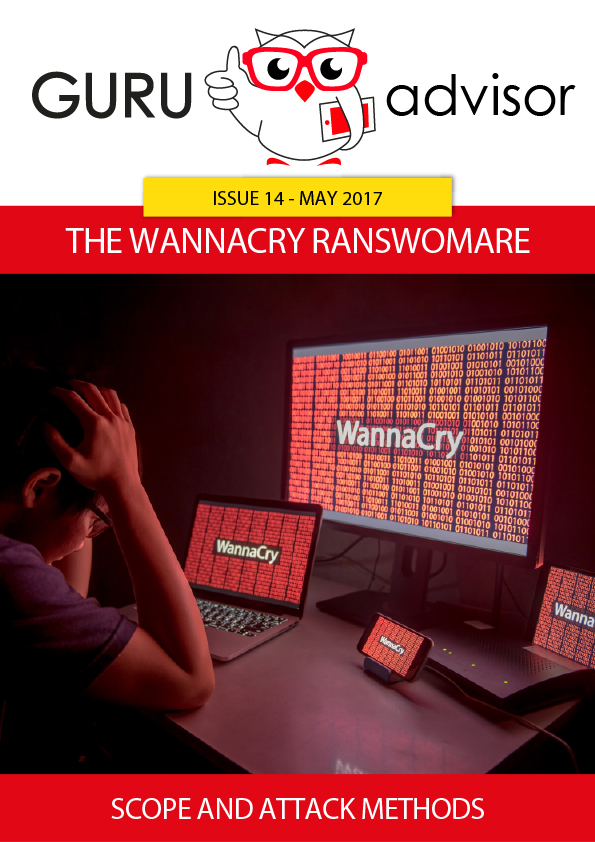You may be using a PC, a workstation or an high end server: knowing CPU, RAM and the other characteristics is not enough to understand the limits and the potentialities of your hardware. In most cases the performances will be determined by the storage, be it an hard disk or an SSD.
When switching from physical to virtual machines, where a low-mid tier server is running several VMs, I/O performances gets even more important. Having the ability to evaluate them is not granted at all, it can even get difficult. Surely, a quick copy of a file from a disk to another or the execution of a dd command on a Linux machine might give you and overlook and a blurry idea of the performances, but it is easy to make a mistake in the considerations, for example by not taking into account the presence of a cache on the controller or the host Operative System caching functions (vSphere, Hyper-V and any other hypervisor) or the guest’s. Often only the sequencial writing/reading speed is evaluated, no clues about the storage bahaviour in terms of number of I/O operations per second are held.
In order to help you to understand how to evaluate those performances we will illustrate out testing methodology as far as hard disks and SSDs are concerned.
The tests that we are about to deal with can be used in other situations and they focus on the intrinsic disks performances as well as their endurance through time and their behaviour with typical work loads like Web Server, File Server or Database, so that you can obtain a concrete preview of the results that will be obtain in practice.
The tool case
The benchmarking most used tool is IOmeter, one of the most versatile and powerful software of the whole hardware testing panorama. Developed by means of a partnership between the main manufacturers, this software allows the creation of multiple agents and advanced configurations capable of simulating any work load on a disk, local or network attached.
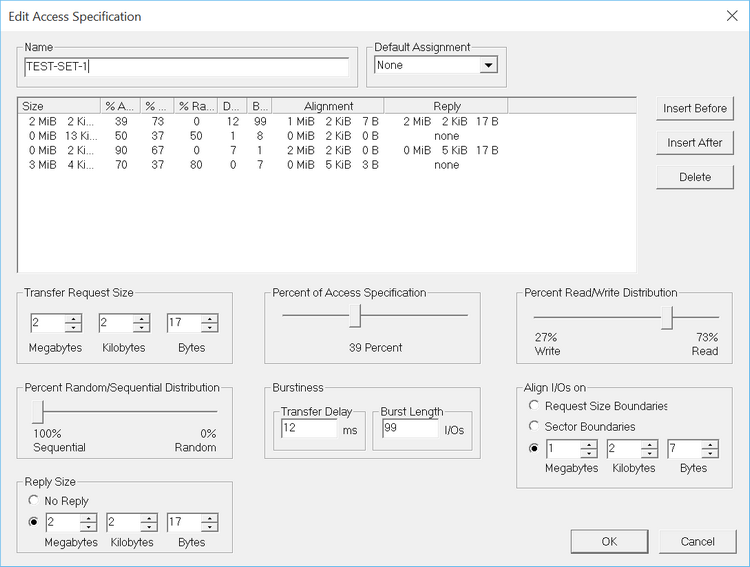 Thanks to an easy window it is possible to configure all the technical parameters related to the data transactions between the storage system: the dimension of data, a possible reply, the delay time, the possible alignment of data with the sectors of the disk, the distribution in terms of writing/reading and sequencial/random and, at last, the creation of profiles that incorporate even many single elements which are executed is an adjustable percentage. The tests are usually performed on a disk without partitions and not formatted to prevent from evaluating performances altered by the logic of the Operative System.
Thanks to an easy window it is possible to configure all the technical parameters related to the data transactions between the storage system: the dimension of data, a possible reply, the delay time, the possible alignment of data with the sectors of the disk, the distribution in terms of writing/reading and sequencial/random and, at last, the creation of profiles that incorporate even many single elements which are executed is an adjustable percentage. The tests are usually performed on a disk without partitions and not formatted to prevent from evaluating performances altered by the logic of the Operative System.
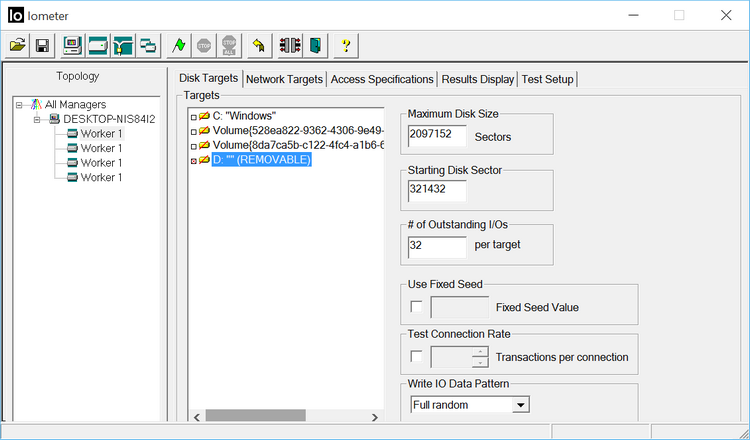
It is also important to set in the main options the usage of casual data and not of a specific pattern that might be recognized by the most evoluted controllers and be treated in a privileged manner. In this window the specific zone of the disk to be investigated and its width can be set
using sectors are unit of measure. All the results are saved as a lof file in .csv format which can be easily imported in Excel.
Sequencial transferring
We use another software ebeside IOmeter to evaluate the sequencial transfer properties of a disk: Atto Disk Benchmark, a dedicated software. This tool is incredibly simple to use and makes possible to visualize, thanks to a simple graphical interface, the sequencial transfer speed (both in writing and reading mode) of a specific partition of the disk, with a variable queue of command. To obtain the maximum speed we can select a command queue with a value of 10; results slightly vary with a value higher than 4, but in this case the evaluation is made on the peaked that can be reached by the disk.
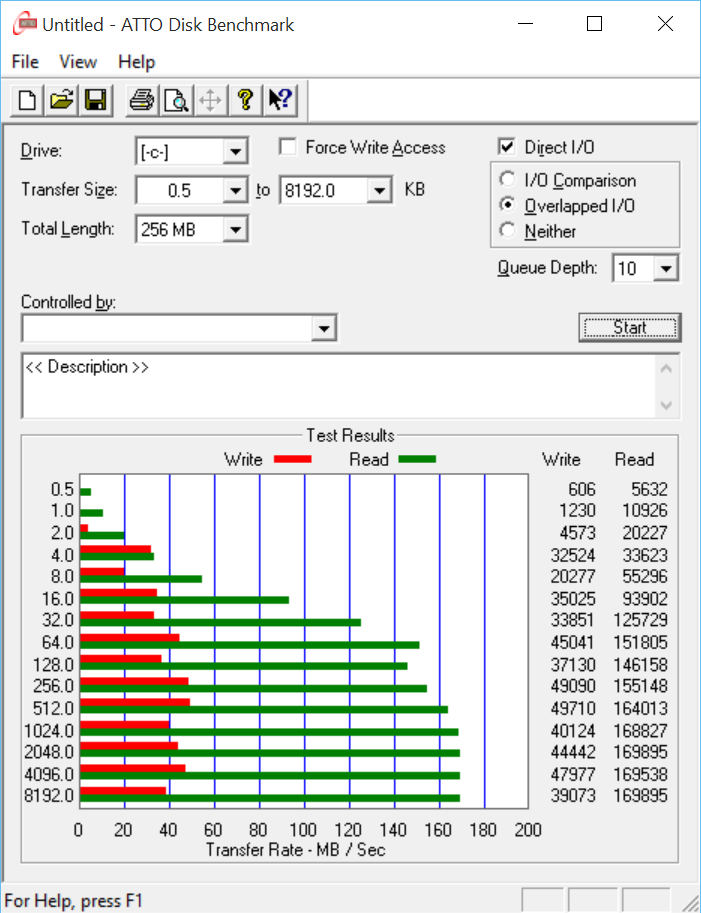 The exposed data are often interesting, it is indeed possible to evaluate the maximum transfer speed of variable dimension data, from a few Kb up to 8Mb.The results are validated by IOmeter through a similar configuration but more accurately calibrated, as the image below shows.
The exposed data are often interesting, it is indeed possible to evaluate the maximum transfer speed of variable dimension data, from a few Kb up to 8Mb.The results are validated by IOmeter through a similar configuration but more accurately calibrated, as the image below shows.
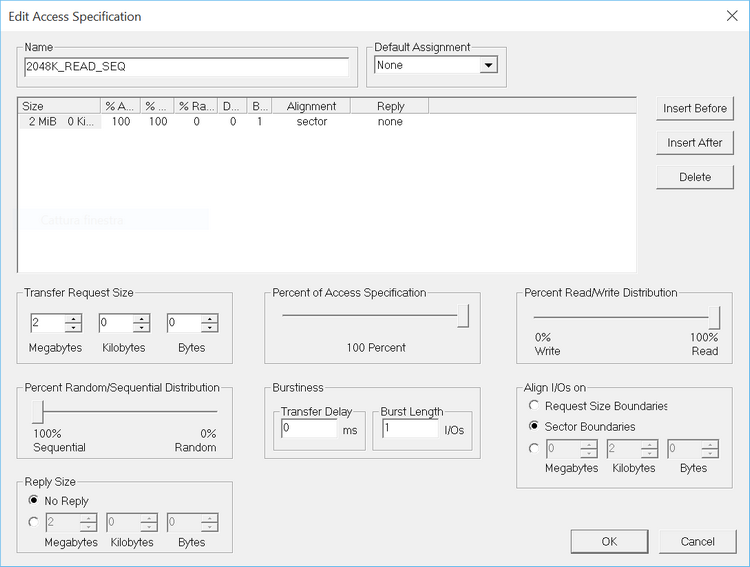
We utilize a 2Mb reading (or writing) transfer with a command queue that spans from 1 to 256, so that the adjustment properties of the disk and its peak speed can be evaluated, even with command queues typical of the modern Operative Systems (the mean is 4).
Casual transferring
To evaluate the disk properties in a casual transfer mode, we can configure IOmeter in a way that it can set up in a totally casual manner the command queue, from 1 to 256, with 4Kb data blocks.
 In this case we take into account both the pure transfer speed and the number of I/Ops performed. In this case the value of the command queue are usually low (1 or 2), then exponentially going up to 8 or 16 when the disks get stabilized. The percentage reached with a command queue of 4, with respect to the absolute maximum value, represents a great indicator of the quality of the controller that is being used.
In this case we take into account both the pure transfer speed and the number of I/Ops performed. In this case the value of the command queue are usually low (1 or 2), then exponentially going up to 8 or 16 when the disks get stabilized. The percentage reached with a command queue of 4, with respect to the absolute maximum value, represents a great indicator of the quality of the controller that is being used.
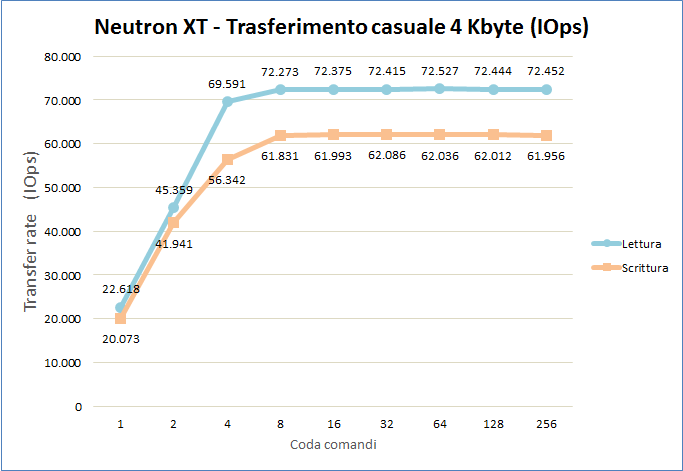
Consistency of performances
Modern SSD disks use internal mechanisms of wear leveling to keep performances constant in time. Those algorithms, if well developed and actualized by a good controller, allow the disk to keep the value of transfer constant thru time, even tough, meanwhile, some mechanisms for the preserveation of speed step in (controller multitasking).
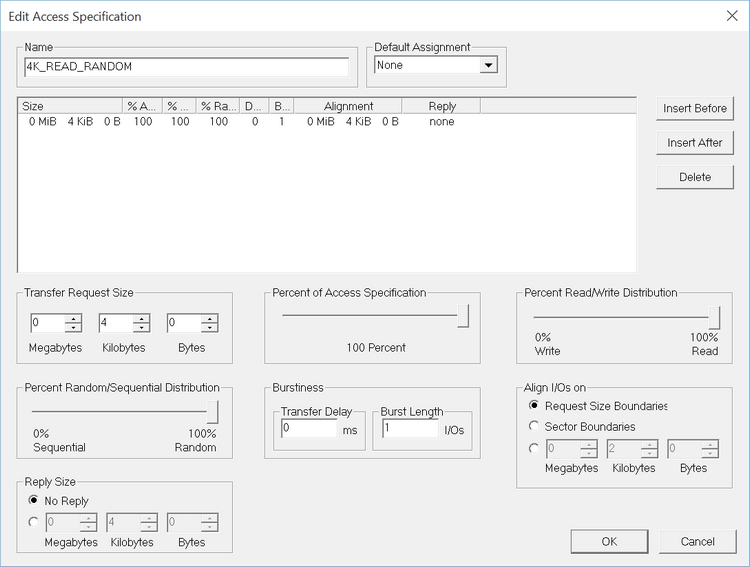
To measure that, we can stress the disk by making a continuous test that last 120 minutes during which the software keeps on writing or reading 4Kb dta blocks with a command queue of 32. The value we are interested in is the number of I/Ops achievable, which should be as steady as possible through time. A decrease after the initial spurt is usual, but the smaller it is, the better the disk performs through time.

Scalability
One of the most interesting parameters for the analysis of and SSD disk and its integrated controller is scalability, that is the capacity of incrementing the performances as the the number of requests or the dimensions of files grow. In our case we analyze in a deeper way the sequencial transfer speed with a 32 commands queue of data with an increasing dimension, from 1 to 2048Kb.
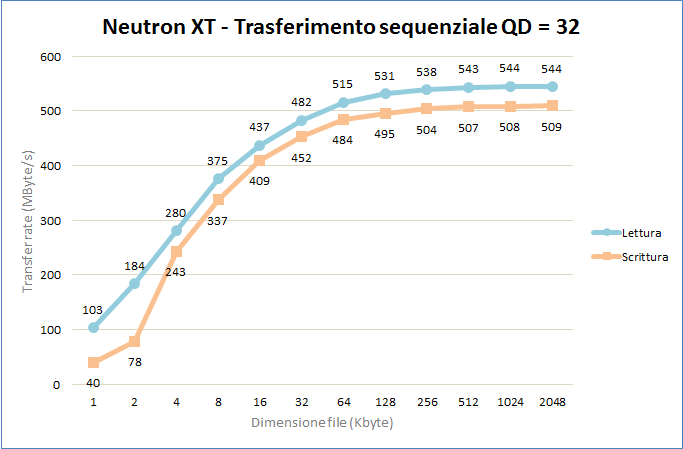
In an ideal model the graph is flat, that means it offers the same performance with any file dimension; in the real world, it’s impossible to reach great speeds with 1Kb data, therefore, the key parameter in the scalability evaluation is the steepness of the curve, which reprensents the necessary time to reach the top speed.
Mixed usage
Obviously no disk is exclusively used to read or write data. In every case we deal with both activities. To evaluate how the controller can handle different activities, we can perform a test in which we transfer 128Kb data blocks with a command queue of 32 and changing the reading/writing ratio, from full reading mode to full writing.
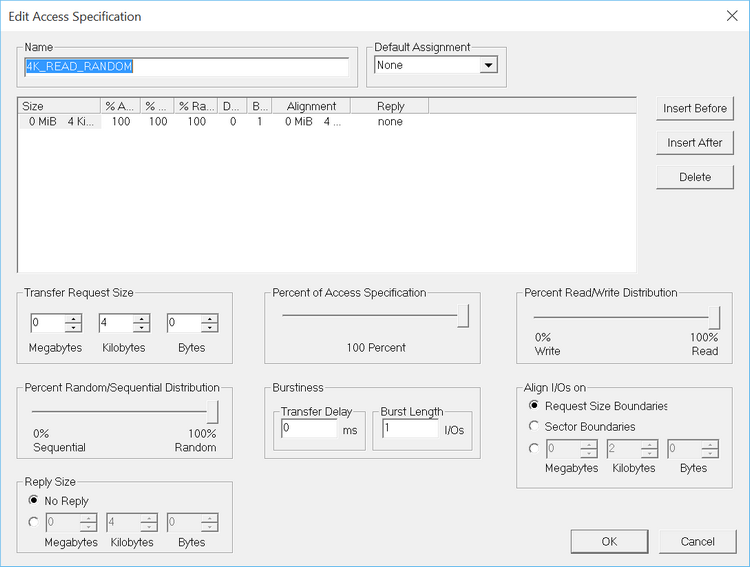 The two extremes asyntotically follow the maximum sequencial transfer values we previously obtained, while the graph presents a concavity where the mean speed with mixed transaction is way lower than the maximum. The graph should be flat with a perfect controller, but in the real world a performance index can be deduced with the ratio between the minimum and the maximum value.
The two extremes asyntotically follow the maximum sequencial transfer values we previously obtained, while the graph presents a concavity where the mean speed with mixed transaction is way lower than the maximum. The graph should be flat with a perfect controller, but in the real world a performance index can be deduced with the ratio between the minimum and the maximum value.
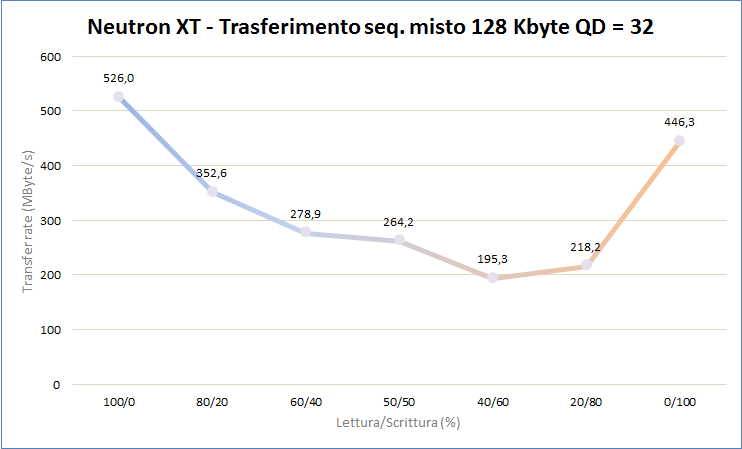
Server and Workstation usage
IOmeter can be used to simulate a more realistic usage of the disk with the typical I/O operatons of a Web Server, a File Server, a Database and a Workstation. The table that sums up a typical utilization of ours is this one:
Profili Letture / Scritture Random / Sequenziale Dimensione blocchi Database 67% / 33% 100% / 0% 8 KB - 100% Fileserver 80% / 20% 100% / 0% 512 Bytes – 10% 1 KB – 5% 2 KB – 5% 4 KB – 60% 8 KB – 2% 16 KB – 4% 32 KB – 4% 64 KB – 10% Web server 100% / 0% 100% / 0% 512 Bytes – 22% 1 KB – 15% 2 KB – 8% 4 KB – 23% 8 KB – 15% 16 KB – 2% 32 KB - 6% 64 KB – 7% 128 KB – 1% 512 KB – 1% Workstation 80% / 20% 80% / 20% 8 KB - 100%
In this case we are interested in both I/Ops and tranferring speed. The profiles are different and we can get quite different “rankings” for each disk analyzed.
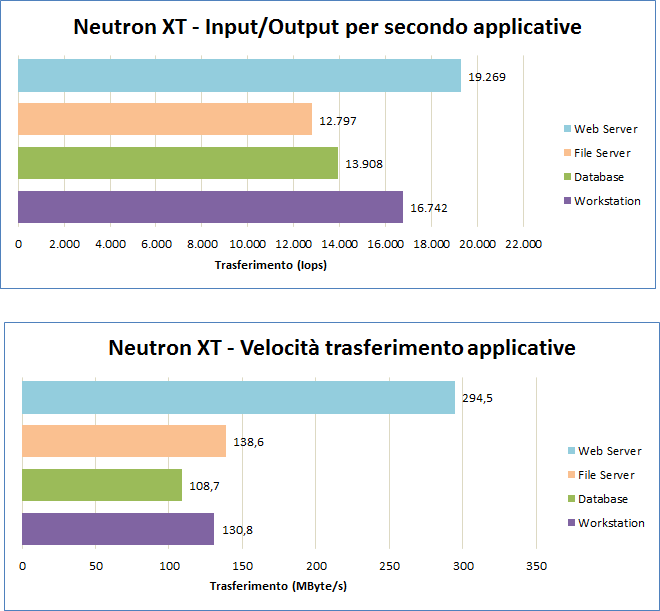 As a reference, mechanical disks barely exceed 10Mb/s in the same conditions.
As a reference, mechanical disks barely exceed 10Mb/s in the same conditions.























